
In some cases, the planet orbits both stars, while in others the planet orbits one of the pair. ...


In some cases, the planet orbits both stars, while in others the planet orbits one of the pair. ...

The new planet would be an uninhabitable gas giant at least three times the size of Jupiter, and the distance from the star would be about the same distance that Saturn is from the Sun. ...
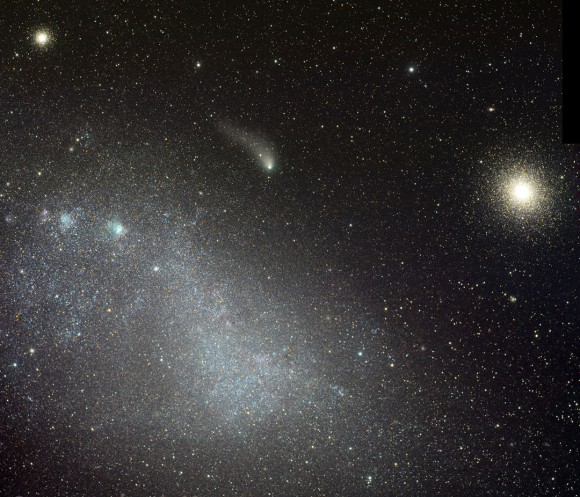
Now that’s pure gorgeous. As Comet C/2013 A1 Siding Spring sidles towards its October 19th encounter with Mars, it’s passing a trio of sumptuous deep sky objects near the south celestial pole this week. Astrophotographers weren’t going to let the comet’s picturesque alignments pass without notice.(...)Read the rest of Caterpillar Comet Poses for Pictures En Route to Mars (394...
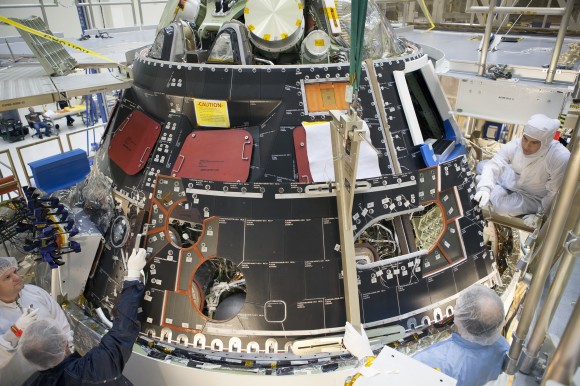
Fabrication of the pathfinding version of NASA’s Orion crew capsule slated for its inaugural unmanned test flight in December is entering its final stages at the Kennedy Space Center (KSC) launch site in Florida. Engineers and technicians have completed the installation of Orion’s back shell panels which will protect the spacecraft and future astronauts from […]...

Astronomers have discovered that filaments of star-forming gas near the Orion Nebula may be brimming with pebble-size particles -- planetary building blocks 100 to 1,000 times larger than the dust grains typically found around protostars. ...

The birth of massive galaxies, according to galaxy formation theories, begins with the buildup of a dense, compact core that is ablaze with the glow of millions of newly formed stars. Evidence of this early construction phase, however, has eluded astronomers — until now. Astronomers identified a dense galactic core, dubbed "Sparky," using a combination of data from several space telescopes. Hubble...
Was Mars — now a cold, dry place — once a warm, wet planet that sustained life? Research underway may one day answer those questions — and perhaps even help pave the way for future colonization of the Red Planet. By analyzing the chemical clues locked inside an ancient Martian meteorite known as Black Beauty, scientists are revealing the story of Mars’ ancient, and sometimes startling, climate history....

Astronomers have obtained the best view yet of a collision between two galaxies when the Universe was only half its current age. To make this observation, the team also enlisted the help of a gravitational lens, a galaxy-size magnifying glass, to reveal otherwise invisible detail. ...
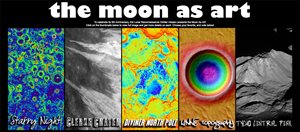
A new technique shows the dramatic influence that hazy exoplanet skies could have on scientists’ ability to learn about alien worlds orbiting distant stars. ...

Landforms surrounding a giant volcano on Mars indicate large lakes of water may have existed within glaciers. ...

The astronomical satellite that hunts gamma-ray bursts ranks number one out of nine ...
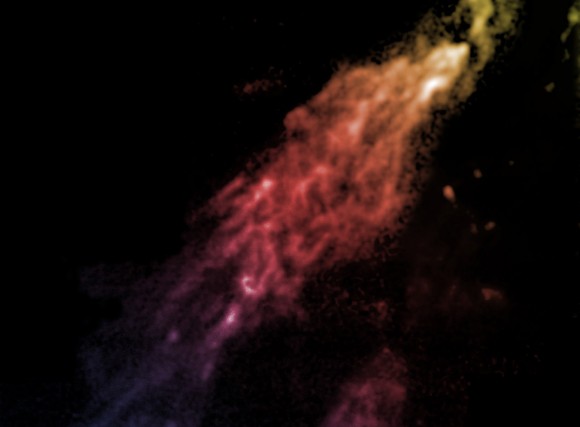
A high-velocity cloud hurtling toward the Milky Way should have disintegrated long ago when it first collided with and passed through our Galaxy. The fact that it’s still intact suggests it’s encased in a shell of dark matter, like a Hobbit wrapped in a mithril coat. (...)Read the rest of Gas Cloud Survives Collision With […]...
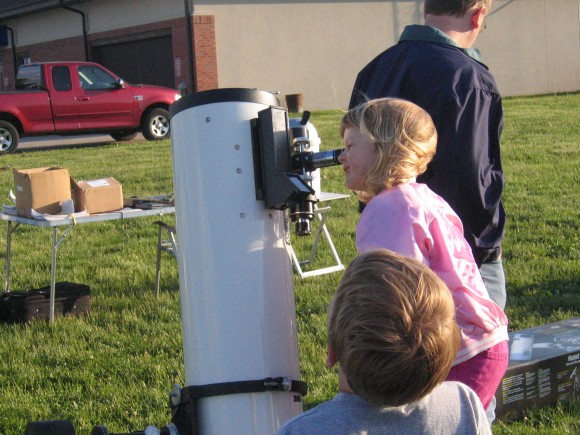
Most children are naturally interested in science. And if you’ve ever heard a five-year-old recite complicated dinosaur names, or all the planets in the Solar System (possibly with a passionate plea on behalf of poor Pluto!), you will know that when it comes to children and science, dinosaurs and astronomy lead the field. I don’t […]...
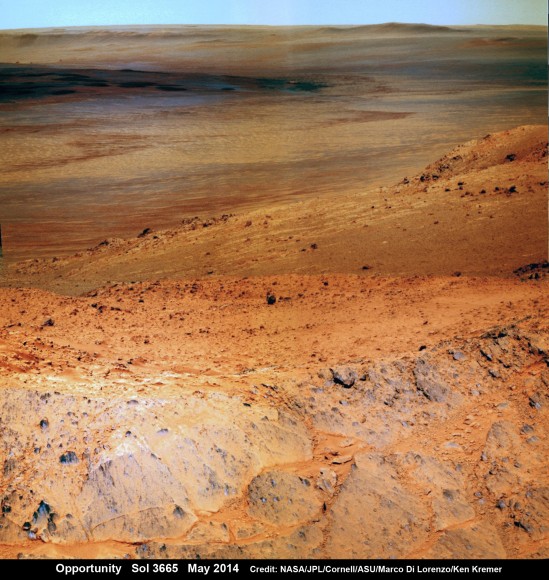
NASA’s incredibly long lived Opportunity rover has driven to the ridgeline of a Martian mountain and captured spectacular panoramic vistas peering down into the vast expanse of huge Endeavour crater and out along the jagged rim segments leading to her next target – which scientists believe is indicative of a habitable zone. See mosaic views […]...
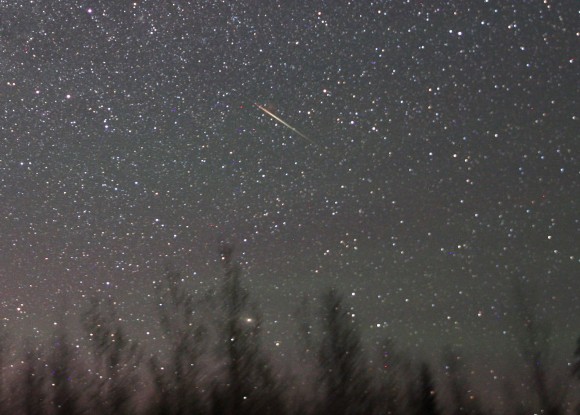
So how were the ‘Cams’ by you? Based on a few reports via e-mail and my own vigil of two and a half hours centered on the predicted maximum of 2 a.m. CDT (7 UT) Saturday morning the Camelopardalid meteor shower did not bring down the house. BUT it did produce some unusually slow meteors and […]...

Like a bullet wrapped in a full metal jacket, a high-velocity hydrogen cloud hurtling toward the Milky Way appears to be encased in a shell of dark matter, according to a new analysis. Astronomers believe that without this protective shell, the high-velocity cloud known as the Smith Cloud would have disintegrated long ago when it first collided with the disk of our Galaxy. ...
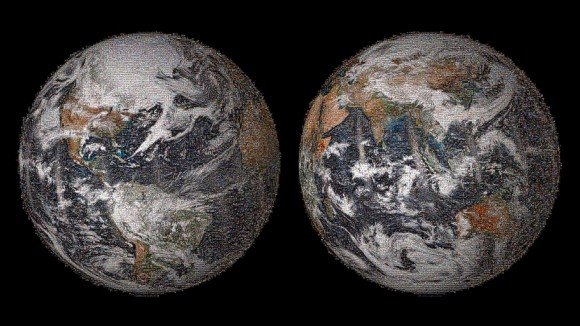
On Earth Day, April 22, NASA invited people around the world to share their “selfies” on social media sites like Twitter, Facebook, Google , and Instagram, showing where on Earth they are and marking them with the hashtag #GlobalSelfie. Well, here we are a month later and the results have just been released… proof of what a beautiful […]...
If you’re a fan of moon observation, it’s lucky for you that spacecraft such as the Lunar Reconnaissance Orbiter exist. For about the past five years, the NASA spacecraft has been in orbit around a closest large neighbor, taking images of the surface in high-definition. To celebrate LRO’s fifth anniversary, NASA is asking members of the public […]...
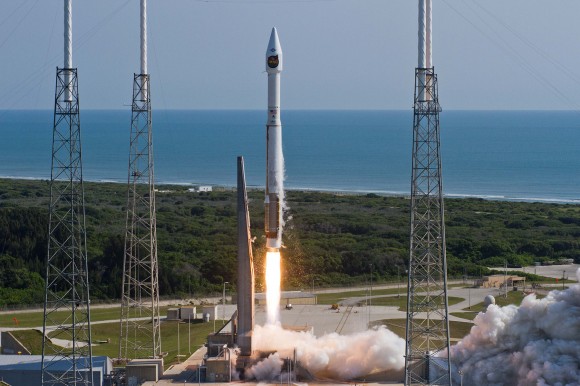
An Atlas V rocket thundered to space on Thursday, May 22, carrying a clandestine surveillance satellite for the US National Reconnaissance Office (NRO) amidst a swirling controversy regarding the boosters long term viability due to its dependence on the continued assured supply of Russian made engines. The United Launch Alliance (ULA) Atlas V rocket soared […]...
Host: Fraser Cain (@fcain) Guests: David Dickinson (@astroguyz, www.astroguyz.com), Alessondra Springmann (@sondy), Morgan Rehnberg (cosmicchatter.org / @cosmic_chatter) & Mike Simmons (Astronomers without Borders) This Week’s Stories: Possible Meteor Storm Starlight Festival ISEE-3 space act/reboot/amp arrived Dream Chaser wind tunnel tests Mars crater discovered Atlas Launch Mars Crater...